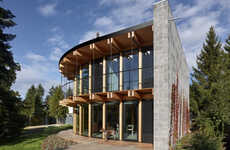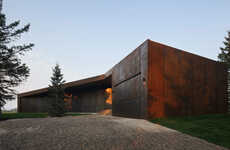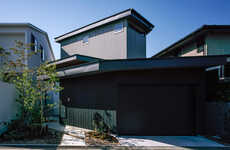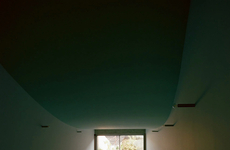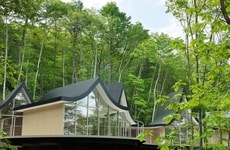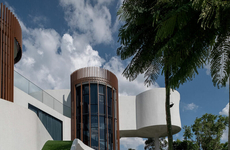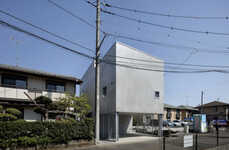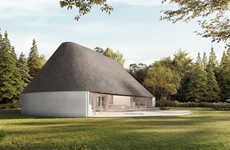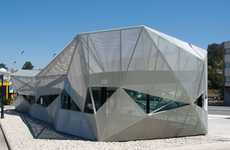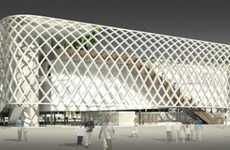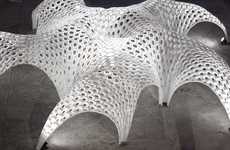
The Pregnant House Embraces Those Who Live Within
Gil Cohen — January 25, 2013 — Art & Design
References: nakam.info & neatorama
Inspired to find a way for home dwellers to find an intimate connection with the building they live in, architect Hiroshi Nakamura designed House SH aka The Pregnant House.
With a smooth bulge protruding from a great white wall along one side, the house takes on the shape of a woman's pregnant stomach. From the inside, the wall actually hollows out into a curved wall with a bit of a ledge, which the designer says he intends the users to interact with, "sitting in it and lying in it." This gentle curve embraces those living within the home, forming a loving relationship with them and creating an intimate space with reflected light and character.
The outward curve of The Pregnant House shares this caring and affectionate relationship with the outside world.
With a smooth bulge protruding from a great white wall along one side, the house takes on the shape of a woman's pregnant stomach. From the inside, the wall actually hollows out into a curved wall with a bit of a ledge, which the designer says he intends the users to interact with, "sitting in it and lying in it." This gentle curve embraces those living within the home, forming a loving relationship with them and creating an intimate space with reflected light and character.
The outward curve of The Pregnant House shares this caring and affectionate relationship with the outside world.
Trend Themes
1. Intimate Architecture - Designing buildings that create an intimate connection with the occupants, such as House SH aka The Pregnant House.
2. Emotional Spaces - Creating spaces that evoke emotions and form a loving relationship with the users, like the curved wall in The Pregnant House.
3. Reflective Design - Incorporating reflective elements into architectural design to enhance the character and atmosphere of a space, demonstrated by the use of reflected light in The Pregnant House.
Industry Implications
1. Architecture - Innovative architects can explore new ways to design buildings that foster intimacy and emotional connection with occupants.
2. Interior Design - Interior designers can embrace the concept of emotional spaces in their designs to create unique and resonant living environments.
3. Lighting Design - Lighting designers can experiment with reflective design strategies to enhance the atmosphere and character of a space, as showcased in The Pregnant House.
3.7
Score
Popularity
Activity
Freshness

